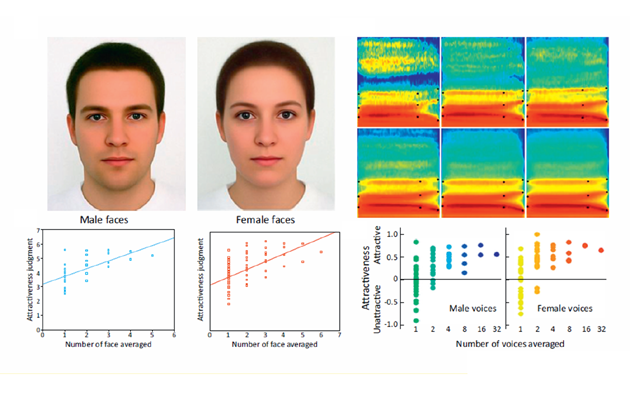Attractiveness and Personality
Description
 We use data-driven modelling of synthetic voices to uncover the determinants of voice attractiveness, and the neuronal and perceptual mechanisms by which different personality impressions are attributed to new voices.
We use data-driven modelling of synthetic voices to uncover the determinants of voice attractiveness, and the neuronal and perceptual mechanisms by which different personality impressions are attributed to new voices.
We show that averaging voices via morphing results in a voice composite that is perceived as more attractive than individual voices (Bruckert et al, 2010).
We show that single word is sufficient to form robust (consistent across listeners) impressions of the speaker’s personality (McAleer et al, 2013).
A recent paper shows how we can modulate these personality impressions in a quasi-parametric manner via principled acoustical manipulations (Belin et al, 2017).
Collaborators
Dr Phil McAleer, Dr Laetitia Bruckert, Dr Alex Todorov, Dr Patricia Bestelmeyer

Relevant Publications
Belin, P., Boehme, B., McAleer, P. (2017) The sound of trustworthiness: Acoustic-based modulation of perceived voice personality. PLoS ONE 12(10): e0185651 PDF
Bestelmeyer, P.E., Belin, P., and Ladd, D.R. (2015). A Neural Marker for Social Bias Toward In-group Accents. Cerebral cortex 25, 3953-3961. PDF
McAleer, P., Todorov, A., and Belin, P. (2014). How do you say ‘hello’? Personality impressions from brief novel voices. PloS one 9, e90779. PDF
Bestelmeyer, P.E., Latinus, M., Bruckert, L., Rouger, J., Crabbe, F., and Belin, P. (2012). Implicitly perceived vocal attractiveness modulates prefrontal cortex activity. Cerebral cortex 22, 1263-1270. PDF
Bruckert, L., Bestelmeyer, P., Latinus, M., Rouger, J., Charest, I., Rousselet, G.A., Kawahara, H., and Belin, P. (2010). Vocal attractiveness increases by averaging. Current biology 20, 116-120. PDF


















